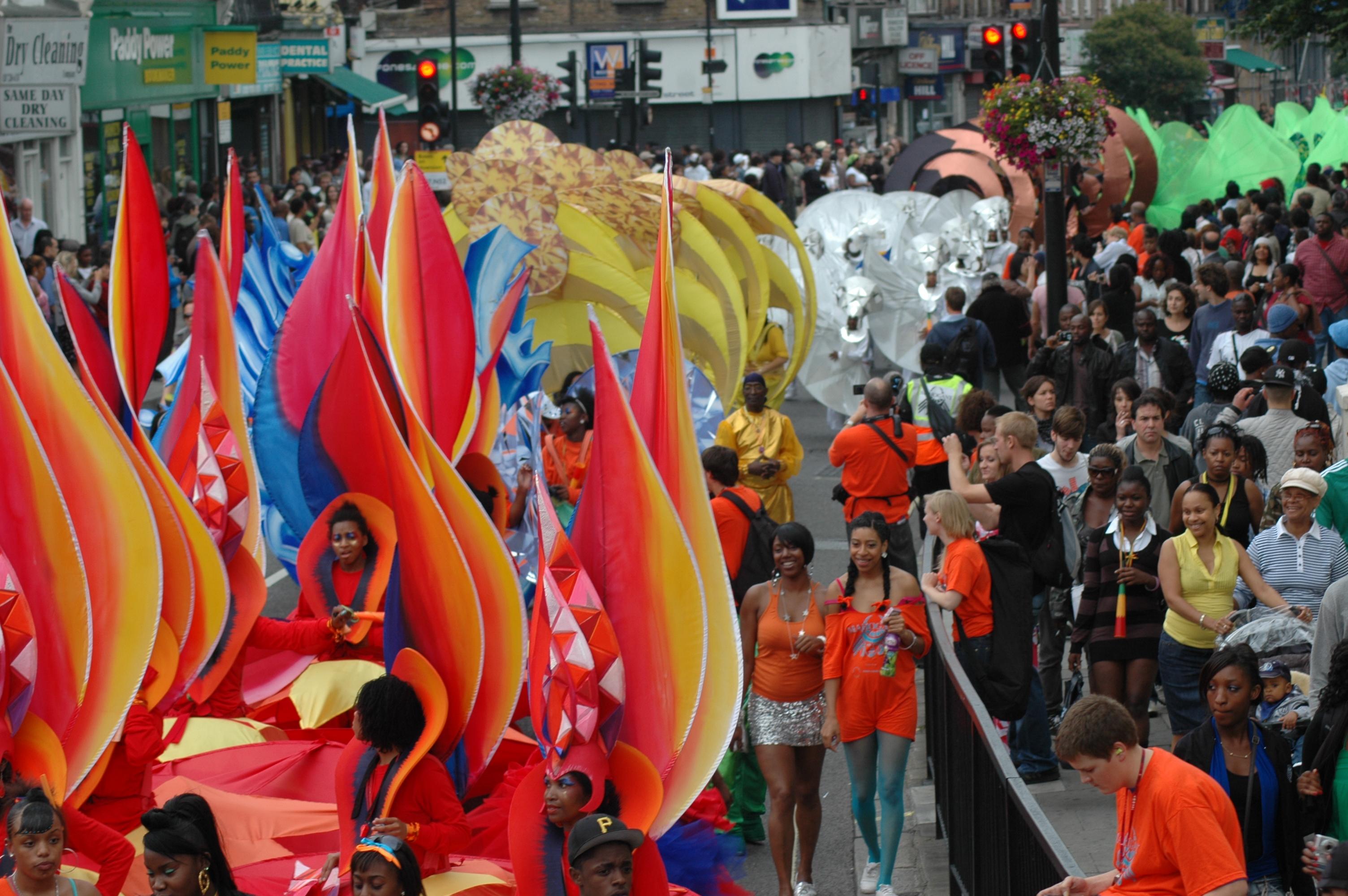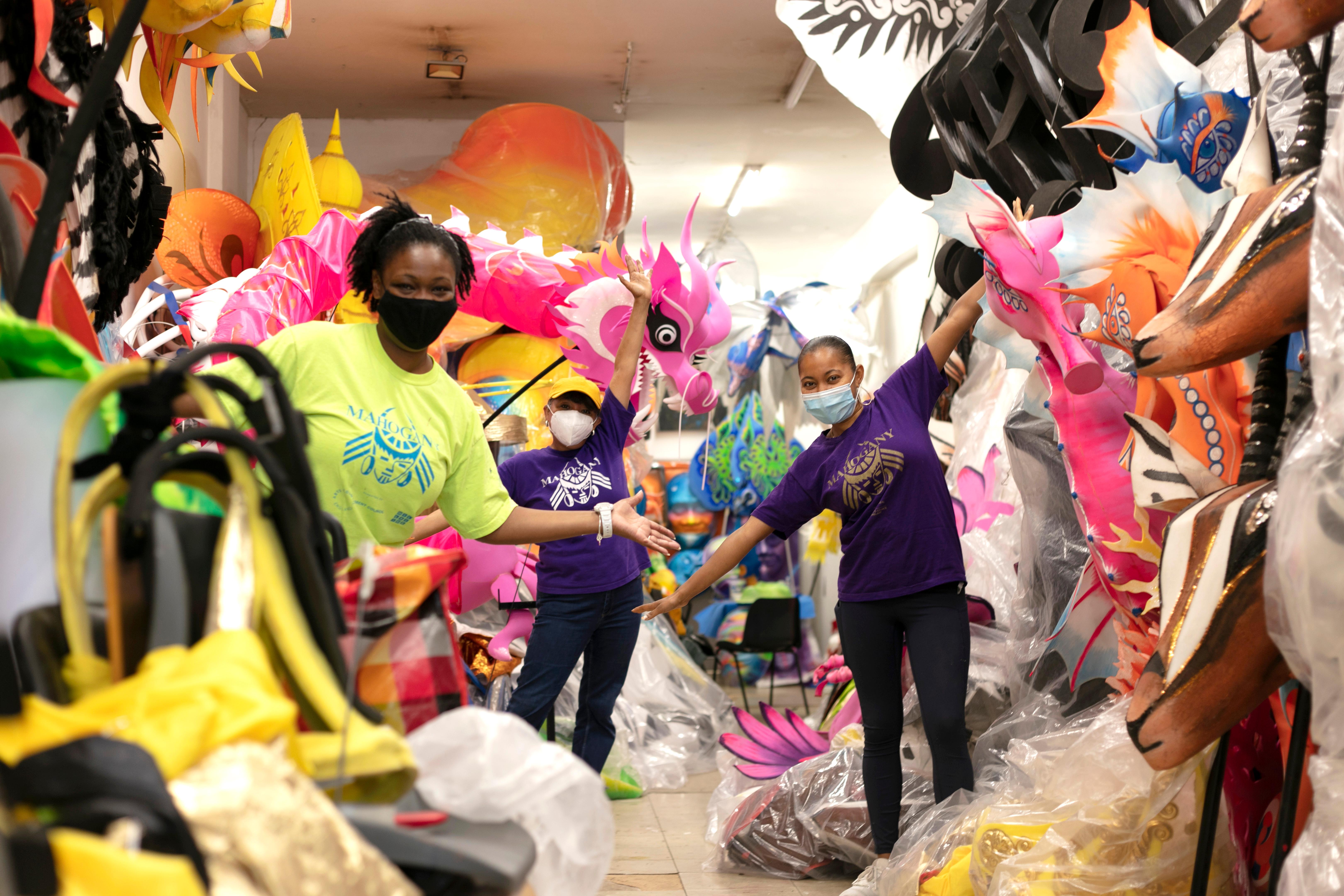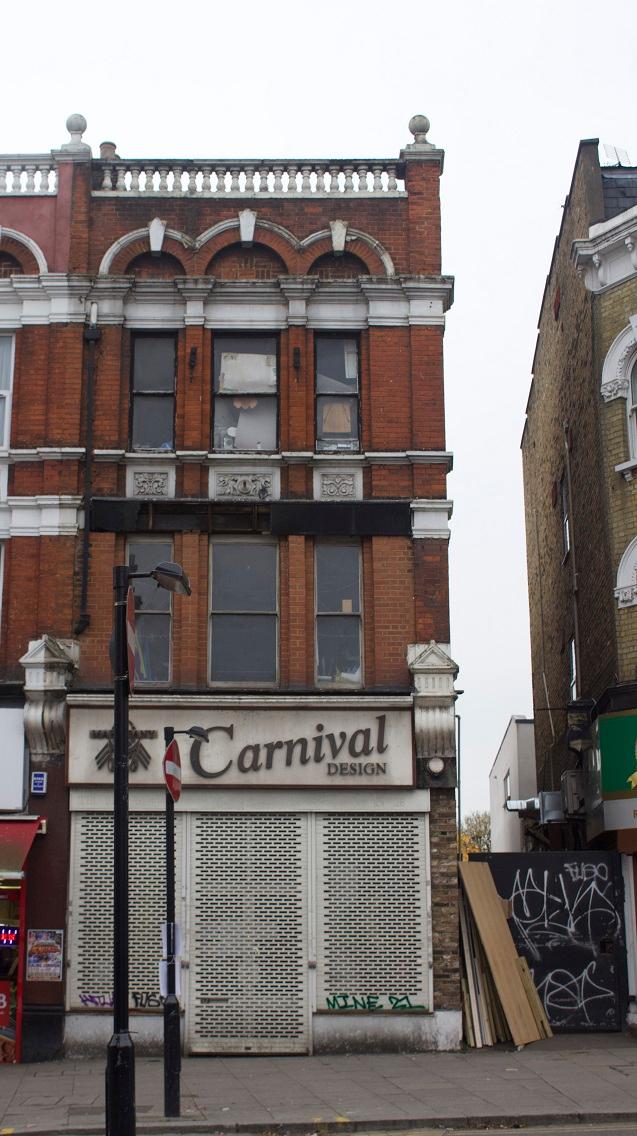Mahogany Carnival Design
Why is Carnival important?

Creative Researcher Neo Ricketts-Collymore grew up with Mahogany, working with them for a number of years. He looked at this picture in our archive, and he wrote:
In this picture you can see a parade in the road, there are a lot of different types of people, different cultures. It’s important because it shows how the parades are done, and how different types of people are watching, having fun, and enjoying the experience.
What is the story behind Mahogany Carnival Design?

Working with Stardust Arts in 1989, and winning first prize for their Mas Band designs at Notting Hill Carnival, structural engineers Michael Ramdeen, Bob Joseph and designer Clary Salandy formed Mahogany Carnival Arts. Clary explained in her interview with Neo, that they set up in order to challenge some of the pre-conceptions about carnival at the time.
In 1990, Harlesden-based Mahogany put together their first Carnival Mas Band. Mahogany describe themselves as a team of multi-disciplinary artists who create large scale carnival characters. Their fusion of the human body with light weight animated sculptures creates engaging street theatre in the spectacle of ‘Mas’.
Mahogany developed techniques of costume design and construction to heighten the understanding of Carnival and the Carnival Art form. The themes for their bands are inspired by activism and the arts, embracing the theatre of Mas to tell compelling stories.
As with Steel Pan, Mas Making originated in Trinidad. French plantation owners organised masquerades and balls before the fasting of Lent. The slaves, who could not take part in these celebrations, formed their own.
Canboulay from the French cannes brulées, meaning burnt cane, is a precursor to Trinidad and Tobago Carnival. This festival is where calypso music has its roots and was originally a harvest festival with drums, singing and dancing.
After emancipation, Canboulay became an outlet and a festival for freed slaves who were banned from participating in the masquerade carnival events derived from the European Christian traditions of the colonial elite.
Recognised as an art form in the 1980’s and funded by Arts Council England, Notting Hill Carnival hosts over 70 Mas Bands.

Thank you to Neo Ricketts-Collymore and Clary Salandy
Find out more
Visit Mahogany’s website here.
Visit the Brent Museum and Archives online exhibition from last year: Carnival in Brent
Please also see Brent Museum and Archives webpages for more information on the history of Harlesden and Brent.
